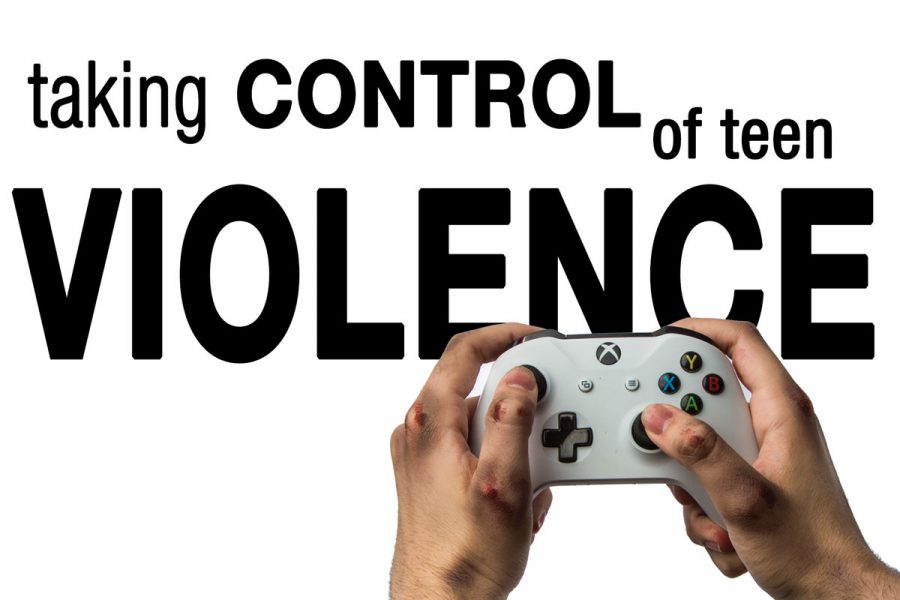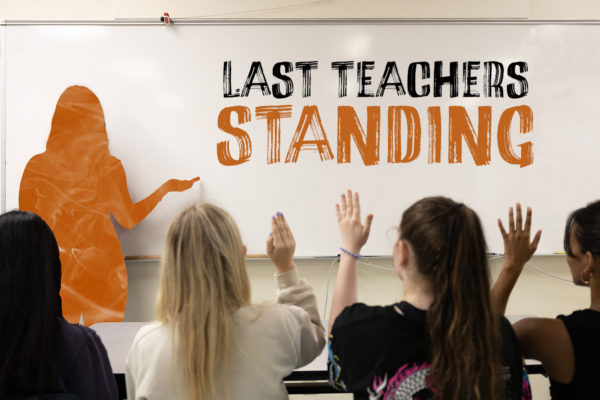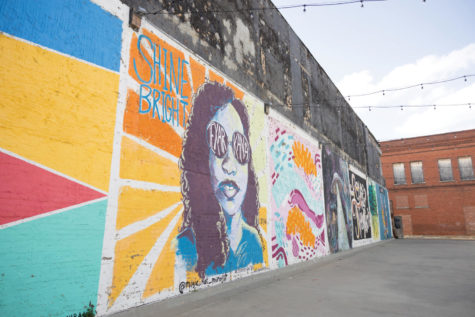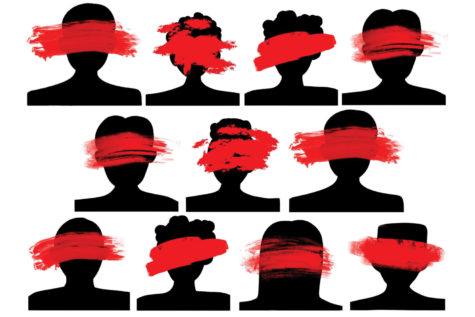Glorifying violence in media filters down to everyday life
Her eyes are bloodshot from staring at the screen for so long. His thumb cramps after hitting the ‘action’ button so many times. But there’s nothing wrong with playing a few hours of video games, or marathoning “The Godfather” trilogy back to back with James Bond and the Avengers.
Because his avatar just got the full upgrade–machine guns and knives and the best outfit–and that one scene when he wakes up with a real, bloody horse head is just so gross (and really, really cool.)
And the next time someone bumps into him in the hallway, or tweets something rude at her on Twitter, they’ll do what they’ve been taught by the world around them: they’ll fight.
Fighting to defend honor, resolve arguments or just simply stay alive isn’t a new concept: historical figures such as Alexander Hamilton and others were killed in duels, a method that dates back almost to the beginning of recorded history.
And while duels were usually fatal (and were thankfully outlawed in America over a century ago) the concept of fighting one-on-one to achieve a certain purpose has endured.
“It’s a power issue,” local psychologist Andrea Cooper said. “A lot of times, they feel powerless at home, so [fighting] gives them power.”
Each person has their own past, and the experiences in it shape the behavior exhibited by teenagers and beyond. Often, these experiences cause behaviors that quickly become harmful.
“[Clients] had families that didn’t care for them or weren’t there for them,” Cooper said. “And were using drugs or prostituting. So their rule is: you can go be a prostitute for money, you can go steal for money. For a lot of my clients, if you got them out of that environment they’d do better. It’s why it’s so important to be a nurturing parent.”
Though family life and other environmental factors can impact on whether a person develops violent tendencies, sometimes they occur naturally.
“Some teenagers are disposed to these antisocial tendencies,” Cooper said. “Antisocial means you don’t go by society’s rules. When you see someone with a pattern of aggression, that’s definitely a red flag. When you get into one fight, that doesn’t mean antisocial. These people are just wired differently.”
Regardless of a natural issue or a difficult home environment, social media, video games and movies can have a large impact on violence as well because they’re forms of entertainment commonly consumed by teenagers.
“A lot of things play into [fights] like social media, video games and bullying,” Cooper said. “I think we’ve all seen ‘wars’ on Facebook and social media, and all of that does start there.”
When it comes to fights that happen at school, social media usually has a great impact because the fight has been planned out after an altercation on a social networking site.
“Our experience has been that it’s something that happened off campus,” principal Brad Bailey said. “Whether it’s on social media, someone looked at them wrong, they didn’t like someone from middle school or they talked to their ex-boyfriend. It can be a number of reasons.”
But it is rare for a fight to happen between just two people. For each person involved in the fight, there are friends, significant others and interested bystanders that crowd around to watch or film the entire event, all seeking the entertainment in watching two people fight.
And, unfortunately, the use of fighting as a means for public entertainment is nothing new, either. The Roman Colosseum, built around 80 AD, had a grand opening of a 100 day period of “games,” including gladiator duels and animal fights, in which a single man would face off against a lion or another large predator.
Although it may come as a surprise, people have enjoyed watching fights and desired to participate in them even before the days of WWE and WorldStar videos.
“Wanting to see something that you’re not used to is part of human nature,” Cooper said. “You’re not the one getting punched, hit, kicked or whatever else. Some people think, ‘I’m glad it’s them and not me.’ We just have a fascination with violence.”
This fascination doesn’t necessarily mean that anyone wants to witness murder or extreme brutality, it can be just as entertaining if it has any type of shock value, even to the point of glorifying the act over the damage it caused.
“You don’t see the end where the kid has got black eyes, or somebody’s in the hospital,” Cooper said. “You’re seeing this exciting event, but the consequences of it are bad. So just know that these kids can get seriously hurt.”
Ultimately, not everyone who gets into a fight is doomed to a horrible future, and not everyone who has watched a fight is sick and twisted. But it doesn’t change the fact that violent video games and popular culture can have a harmful impact on reality.
“You have to ask: can you handle the difference between life and a game?” Cooper said. “If you’re spending all your hours playing video games, you’re not participating in your life, which is bad. But video games aren’t the root of all evil. It’s like anything else: are you overindulging? Are you looking at the screen and saying: oh, I can steal this car, I can kill this person. I’m good at this game, so maybe I’ll be good with a real gun. That’s just not the way to do it.”

[email protected]
Jillian Cheney is happy to be returning from her stint in the Bronx as a senior at Texas High School. She is even...








